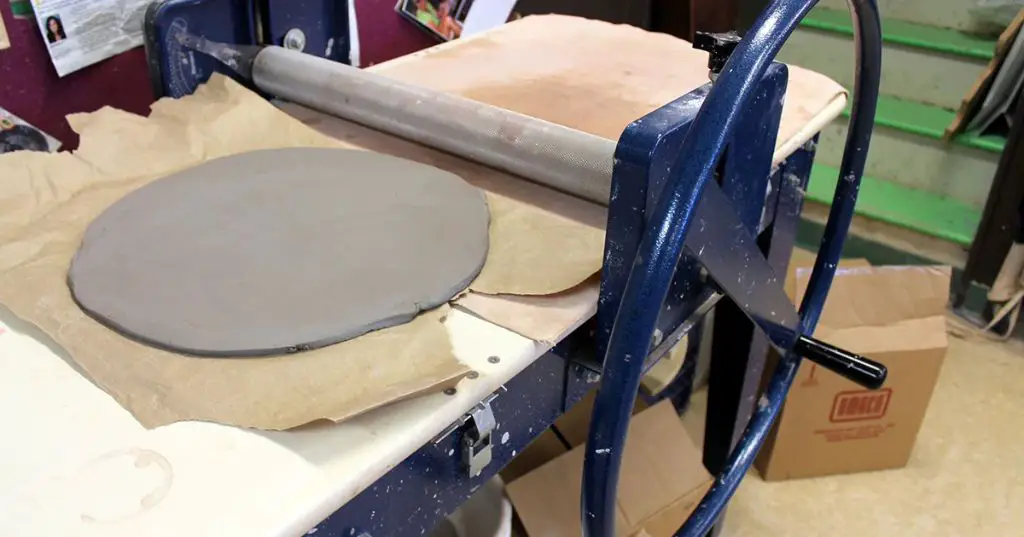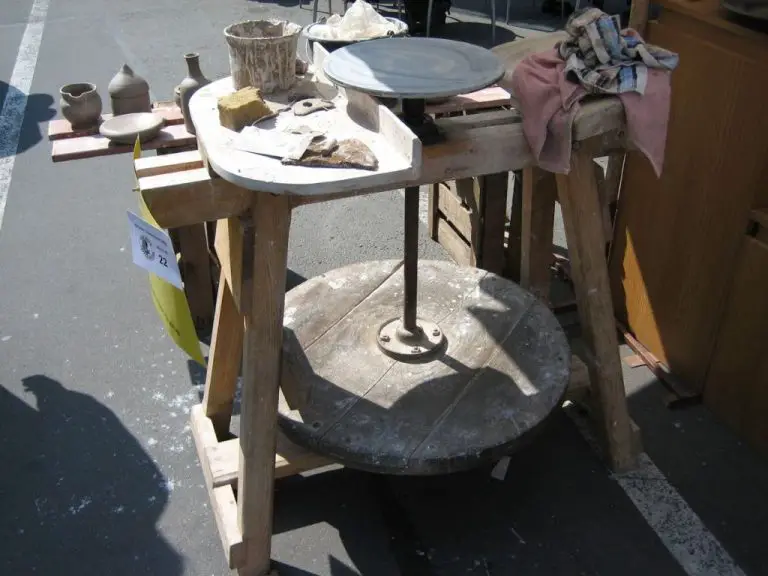Do I Need A Slab Roller?
What is a slab roller?
A slab roller is a piece of equipment used in ceramic arts for rolling out slabs of clay. It consists of two large rollers mounted on a sturdy frame. One of the rollers is powered, while the other one is adjustable. The space between the rollers is called the “gap.” The adjustable roller can be moved closer or further from the powered roller to change the thickness of the clay slab.
To use a slab roller, you first prepare your clay into ball or brick shape. You then set the clay on the powered roller and crank it through the gap. As the clay is rolled between the two cylinders, it is flattened into an even slab at the thickness you set with the adjustable roller. The slab comes out the other side, ready to be used for handbuilding or other ceramic projects.
Slab rollers allow potters and ceramic artists to quickly and evenly roll slabs for functional wares or decorative pieces. They provide consistency in slab thickness compared to rolling out clay slabs by hand. Using a slab roller saves time and physical effort compared to hand rolling. Models range from large industrial-grade rollers to small tabletop versions for home studios (Source).
Benefits of owning a slab roller
One of the biggest benefits of owning a slab roller is that it makes working with clay much easier and more efficient. According to PotteryClayThailand.com, slab rollers allow you to quickly create an even clay surface. This saves a lot of time compared to rolling out slabs by hand.
Slab rollers also enable consistent slab thickness. You can dial in the exact thickness you want, and the roller will produce uniform slabs every time. This consistency allows for easier assembly and joining of slab pieces.
Using a slab roller greatly reduces the physical effort needed to work with clay slabs. Rolling out clay by hand can be tiring and stressful on the body. A slab roller takes over the hard labor, preventing soreness and fatigue.
Downsides of slab rollers
While slab rollers offer many benefits, they also come with some downsides to consider before purchasing one. The main disadvantages of slab rollers include:
Expensive – Slab rollers can be quite pricey, especially heavy-duty electric models. Expect to spend at least a few hundred dollars for a basic manual slab roller, and over $1000 for a high-end electric version. This significant investment may put slab rollers out of reach for hobbyist potters or those on a tight budget.
Take up space – Slab rollers tend to be quite bulky and heavy, requiring a dedicated space in your studio. Make sure you have enough room to comfortably operate the slab roller and safely store it when not in use. This may be an issue in a smaller home studio.
Limited thickness options – Most slab rollers only accommodate a certain range of clay thicknesses, usually from 1/4″ up to 1″ thick. It can be tricky to roll thicker slabs evenly. Hand rolling may offer more flexibility for varying slab thicknesses.
While the convenience and speed of a slab roller is appealing, the cost, space requirements, and thickness limitations should be carefully weighed before deciding if purchasing one makes sense for your needs and budget.
Types of slab rollers
Slab rollers come in a variety of types. The two main categories are manual and electric. Manual slab rollers require physical effort to roll out the clay, while electric slab rollers utilize motors and gears to assist in rolling.
Some key differences between manual and electric slab rollers:
- Manual – Require more physical effort, cheaper price points, smaller/portable sizes available (Reference 1).
- Electric – Less physical effort, higher price points, larger sizes, thicker slabs possible (Reference 2).
Another way to categorize slab rollers is by tabletop vs freestanding. Tabletop slab rollers sit on top of a work surface, while freestanding models stand on their own frame or legs. Tabletop models take up less space but may have size/weight limitations. Freestanding rollers are larger and heavier but don’t require a separate stand or table (Reference 3).
Individual slab roller models can further differ based on:
- – Roller width – Wider rollers accommodate larger slabs.
- – Maximum clay thickness – Thicker clay slabs require heavy duty rollers.
- – Adjustable thickness settings – Allow flexibility for different slab thicknesses.
- – Frame materials – Wood, steel, aluminum frames have different durability.
Considering your needs
When deciding if you need a slab roller, it’s important to consider factors like how much clay work you do, your available space, budget, and physical abilities.
If you only make pottery occasionally as a hobby, a slab roller may not be worth the investment. However, if you create a high volume of handbuilt work, a slab roller can greatly improve efficiency and consistency (The Ceramic Shop, 2022).
Those with limited studio space should look for compact tabletop models that can be easily stored. Larger free-standing slab rollers require more square footage but offer features like variable speed control (Quora, 2022).
Budget is another key factor, as quality slab rollers range from $200 for mini tabletop versions up to $2,000+ for heavy-duty roller systems. Consider how often you’ll use it and your ability to accommodate a larger financial investment (The Ceramic Shop, 2022).
Finally, assess your own strength and mobility. Operating a manual slab roller requires physical exertion to crank the handle. Motorized options remove this effort but may be pricier. If you have limited mobility, look for models with features like a built-in dolly for portability (Quora, 2022).
Best slab rollers for beginners
If you’re just starting out with slab rolling, it’s a good idea to begin with an affordable, easy to use model. As a beginner, you’ll want a slab roller that is straightforward to operate and doesn’t have complex features you won’t use as you’re learning. Focus on finding a slab roller that allows you to make uniform slabs with a rolling pin you can comfortably apply pressure to. Here are some of the top choices for beginners:
The North Star Portaroller is a great portable pick for beginners – it’s lightweight at just 23 pounds but still made of heavy-duty steel. Reviewers mention how smooth the rolling action is. It’s an affordable option that will allow you to start rolling uniform slabs.
The Amaco Polytool PolyRoller Tabletop Slab Roller is another choice praised for being easy to use. It has a width of 24 inches, providing a large enough surface for most small projects. The folding legs allow you to tuck it away.
If you want a full-sized electric slab roller, the VINTAGE Craftsman Deluxe Clay Working Slab Roller offers power assisted rolling at an affordable price. It has a width of 26 inches and depth of 11 inches.
Focus on finding a slab roller that feels comfortable and allows you to make even slabs as you learn the basics of operating one.
Top picks for advanced users
For professional ceramic artists or studios with higher production needs, more powerful slab rollers can help increase efficiency and save time. Here are some top options:

The Bailey DRD features a heavy-duty steel frame, large 17.5″ rolling capacity, and a powerful 3/4HP motor. This industrial strength model offers variable speed control from 0-18 RPM. It’s built to withstand heavy studio use while producing smooth, even slabs.
The Nidec-Shimpo SR-60 produces uniform slabs up to 22″ wide. With its 2HP motor, it can power through stiffer clays with ease. The heavy cast iron construction provides stability during rolling. This is a workhorse slab roller suitable for potters who need to produce a high volume of slabs.
For extra large slabs, North Star’s Deluxe Floor Model accommodates slabs up to 25″ wide. The 1HP motor provides plenty of torque. Dual foot pedals allow precision speed control while keeping hands free. This heavy-duty model is ideal for slab-built projects like large platters, tableware, or sculpture.
These pro-grade slab rollers offer advanced features to improve workflow for busy ceramic artists and studios. Investing in a high quality, powerful slab roller can save significant time and effort long-term.
Safety tips
When using a slab roller, it’s important to follow proper safety precautions to avoid injuries. Here are some key tips:
Proper use:
- Read the instruction manual thoroughly before using the slab roller for the first time.
- Make sure fingers and hands are clear of the rollers before turning on the machine. According to the Slab Roller Awareness Reminder, injuries often occur when hands get caught in rollers.
- Do not apply too much pressure when rolling clay. Let the machine do the work.
- Pay attention and avoid distractions when operating the slab roller.
Cleaning and storage:
- Unplug the slab roller before cleaning.
- Use a damp cloth to wipe down the rollers and remove any clay residue after each use.
- Store the slab roller in a secure location when not in use.
Avoiding injuries:
- Tie back long hair and avoid wearing loose clothing or jewelry that could get caught.
- Maintain a flat, clutter-free workspace around the slab roller.
- Take breaks during prolonged use to avoid repetitive stress injuries.
- Get training on proper use if you are new to working with a slab roller, as outlined in these ceramics safety rules.
Following basic safety precautions will help ensure you can enjoy using a slab roller without injuries.
DIY slab roller options
For crafty creators on a budget, making your own slab roller with simple DIY materials can be a great option. Using common household items like PVC pipes, wooden boards, dowels, and rolling pins, you can create an effective slab roller with minimal investment. The key is finding plans that work for your needs and skill level.
Beginners may want to start with very simple slab rollers made from wood boards and dowels or rolling pins. Setting the dowels at fixed widths allows you to roll out uniform slabs. More advanced options use PVC pipes, furniture casters, and adjustable handles to create rolling slab machines with adjustable thickness. While DIY slab rollers take more work than purchasing a pre-made machine, the lower cost and ability to customize makes them ideal for crafty clay artists, educators, and hobbyists looking to create slabs on a budget.
Final verdict
When determining if you need a slab roller, there are a few key considerations to keep in mind:
Space limitations – Slab rollers take up a decent amount of space. Make sure you have room in your studio or workshop for both the roller and working area around it.
Frequency of use – Consider how often you will realistically use a slab roller. These machines are an investment, so make sure you will use it enough to justify the cost.
Types of projects – Slab rollers excel at rolling out smooth, even slabs of clay. If you frequently make tiles, plates, or other flat items, a roller can be very useful.
Physical ability – Rolling out clay entirely by hand can be taxing. If you have any injuries or conditions that make clay work difficult, a roller may help reduce strain.
Budget – Entry-level slab rollers start around $200, while heavy-duty motorized rollers can cost over $1000. Set realistic expectations for what you can afford.
Ultimately, slab rollers are worthwhile investments for ceramic artists working on certain types of projects. If you find yourself regularly struggling to roll out smooth, even slabs by hand, a roller can greatly improve consistency and efficiency in your workflow. Take time to consider if the benefits justify the cost and space requirements for your individual needs.



